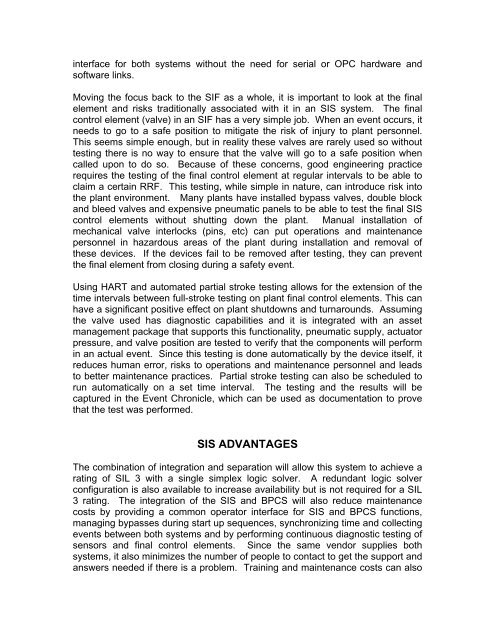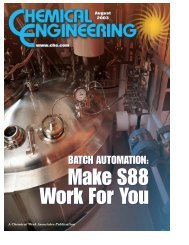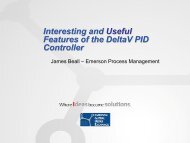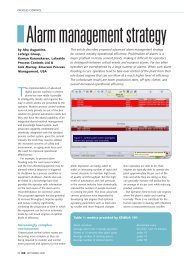safety instrumented systems: can they be integrated but separate
safety instrumented systems: can they be integrated but separate
safety instrumented systems: can they be integrated but separate
You also want an ePaper? Increase the reach of your titles
YUMPU automatically turns print PDFs into web optimized ePapers that Google loves.
interface for both <strong>systems</strong> without the need for serial or OPC hardware andsoftware links.Moving the focus back to the SIF as a whole, it is important to look at the finalelement and risks traditionally associated with it in an SIS system. The finalcontrol element (valve) in an SIF has a very simple job. When an event occurs, itneeds to go to a safe position to mitigate the risk of injury to plant personnel.This seems simple enough, <strong>but</strong> in reality these valves are rarely used so withouttesting there is no way to ensure that the valve will go to a safe position whencalled upon to do so. Because of these concerns, good engineering practicerequires the testing of the final control element at regular intervals to <strong>be</strong> able toclaim a certain RRF. This testing, while simple in nature, <strong>can</strong> introduce risk intothe plant environment. Many plants have installed bypass valves, double blockand bleed valves and expensive pneumatic panels to <strong>be</strong> able to test the final SIScontrol elements without shutting down the plant. Manual installation ofmechanical valve interlocks (pins, etc) <strong>can</strong> put operations and maintenancepersonnel in hazardous areas of the plant during installation and removal ofthese devices. If the devices fail to <strong>be</strong> removed after testing, <strong>they</strong> <strong>can</strong> preventthe final element from closing during a <strong>safety</strong> event.Using HART and automated partial stroke testing allows for the extension of thetime intervals <strong>be</strong>tween full-stroke testing on plant final control elements. This <strong>can</strong>have a signifi<strong>can</strong>t positive effect on plant shutdowns and turnarounds. Assumingthe valve used has diagnostic capabilities and it is <strong>integrated</strong> with an assetmanagement package that supports this functionality, pneumatic supply, actuatorpressure, and valve position are tested to verify that the components will performin an actual event. Since this testing is done automatically by the device itself, itreduces human error, risks to operations and maintenance personnel and leadsto <strong>be</strong>tter maintenance practices. Partial stroke testing <strong>can</strong> also <strong>be</strong> scheduled torun automatically on a set time interval. The testing and the results will <strong>be</strong>captured in the Event Chronicle, which <strong>can</strong> <strong>be</strong> used as documentation to provethat the test was performed.SIS ADVANTAGESThe combination of integration and separation will allow this system to achieve arating of SIL 3 with a single simplex logic solver. A redundant logic solverconfiguration is also available to increase availability <strong>but</strong> is not required for a SIL3 rating. The integration of the SIS and BPCS will also reduce maintenancecosts by providing a common operator interface for SIS and BPCS functions,managing bypasses during start up sequences, synchronizing time and collectingevents <strong>be</strong>tween both <strong>systems</strong> and by performing continuous diagnostic testing ofsensors and final control elements. Since the same vendor supplies both<strong>systems</strong>, it also minimizes the num<strong>be</strong>r of people to contact to get the support andanswers needed if there is a problem. Training and maintenance costs <strong>can</strong> also






